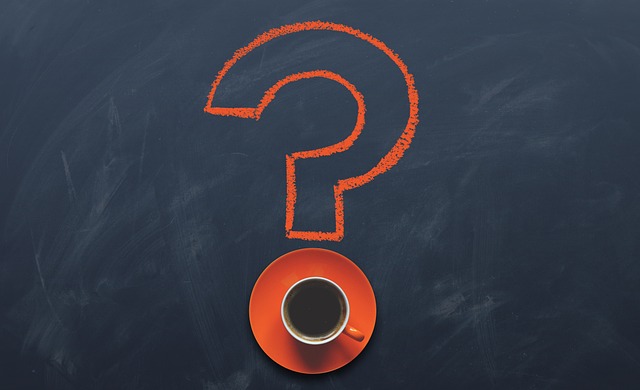How ti ]] (explain term) is dedicated to providing the anyone who wants to learn about (insert topic here) with a safe and accessible teaching environment in which they can master their skills.
Using Unicode
Unicode is an industry standard for encoding, representing, and handling text in any language. It provides a unique number for every character, no matter what platform, device, or application is used to view it. Unicode has been around since 1991 and is the universal standard for all written languages in the world. As of 2010, it supports over 110,000 characters from alphabets used by major languages to obscure historical scripts and sign languages.
Unicode has two different encoding forms: UTF-8 and UTF-16. UTF-8 (Unicode Transformation Format) is a variable length character encoding capable of representing all 1,112,064 valid code points in Unicode using 8 bits per character (octets). UTF-16 is a variable length character encoding capable of representing all 1,112,064 valid code points in Unicode using 16 bits per character (octets).
Unicode is a document created in 1991
Unicode specifies the way that text is represented on devices. The Unicode standard assigns a number to every character, allowing computers to represent almost any language or symbol in a text file. This allows for data interchange across languages and regions.
Unicode characters are assigned numbers from 0 to over 1 million. The first 128 numbers are called Basic Multilingual Plane (BMP) characters and were defined in 1993. In 1996, another plane was added to the standard, called Supplementary Multilingual Plane (SMP).
This plane contains characters used in East Asian languages and other symbols used by ancient writing systems like cuneiform and Egyptian hieroglyphics. There are currently over 100,000 characters in Unicode 6.2, released in 2012.
Using Emojis
Emojis are the most popular way to express yourself in a text message. They can be used to convey your mood, add emphasis, or make a point. If you’re unsure about how to use emojis, read on for some tips. Emojis are small icons that are often used in texting and messaging apps to express an emotion or feeling. They were first introduced in Japan but have since become increasingly popular around the world.
Emojis are often used by younger people and those who live in urban areas they’re not common among older generations or people who live in rural areas. Emojis are also popular among people who speak English as a second language (ESL).
There are many different types of emojis, such as smiley faces, hearts and even animals like dogs and cats, You can also find food-related ones like pizza slices or tacos too. Here are some common emoji meanings: Smiley Face: Happy; excited; cheerful; enthusiastic; amused; silly; joyful; humorous (or not)
Using MathJax
The MathJax framework for displaying mathematics and scientific content in web browsers. MathJax is a free open-source JavaScript display engine for mathematics that works in all browsers.
It was originally developed by the American Mathematical Society (AMS) as an alternative to using Adobe Systems’ proprietary JavaScript display engine, MathPlayer, which was required to display mathematical expressions on many sites such as Wikipedia and arXiv.
Using Wiki markup
Using Wiki markup is as simple as typing text. To make it more useful and accessible, you need to add some of the formatting codes that are available. This article will explain how to use basic wiki markup, and provide links to more in-depth guides for more advanced topics.
Basic Formatting Codes
The most basic formatting codes are the ones that will be used most often: bold, italics, underline and superscript. These can be applied automatically by using double brackets around a word or phrase (example: [[italicized]] or by using an equal sign before the word or phrase (example: =italicized=).
There are also codes for adding links and images. You can create a link by including square brackets around the URL (example: [http://www.example.com Example Website]). Images must be uploaded separately from regular text before they can be linked within your post; they can then be inserted into your post with double brackets (example: [[Image:picture.png|200px|link text]]).
Use wiki markup to format your text
- Use a heading to start each new topic or section of a page, such as a title or subtitle.
- Use bold text for titles of pages and sections within articles, and to highlight important words or phrases in the text.
- Use italics for emphasis and titles of books, films, and other works. A single word that you want to emphasize should be surrounded by two apostrophes (”). If you need to emphasize more than one word, use single quotation marks instead of double quotation marks: He said “She’s coming” not “He said ‘She’s coming’.”
- Add hyperlinks to other pages on Wikipedia. You can create a link to another Wikipedia article by enclosing the title in double square brackets: [[Article name]] (the full title will appear in the browser window when someone clicks on this link).
When linking between related articles, use the same title for each article; this makes it easier for readers to follow links between related articles. For example, if you are writing about the American Civil War, add links between your articles about battles fought during that war; don’t call one “Battle of Gettysburg” and another “The Battle of Gettysburg”.
Conclusion
You’re not just a passive observer, you’re a participant. You can try it out for yourself, and even if you don’t like it, you can still appreciate the effort that went into making it. It doesn’t matter if you don’t understand everything that happened in the video or how it was made. Just like reading a book or watching a movie, you get to choose what parts of the experience are worth focusing on.



 Bitcoin
Bitcoin  Ethereum
Ethereum  Tether
Tether  XRP
XRP  Solana
Solana  USDC
USDC  TRON
TRON  Cardano
Cardano  Lido Staked Ether
Lido Staked Ether  Avalanche
Avalanche  Toncoin
Toncoin